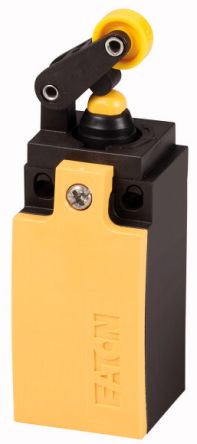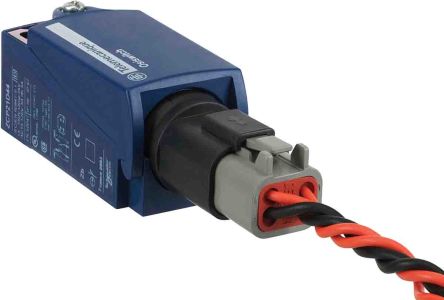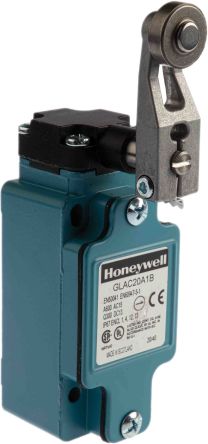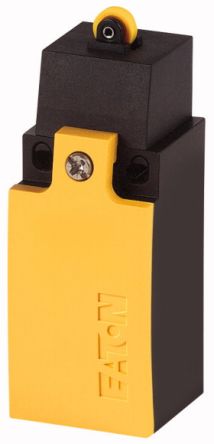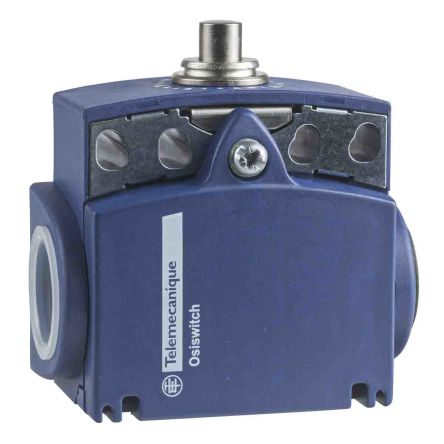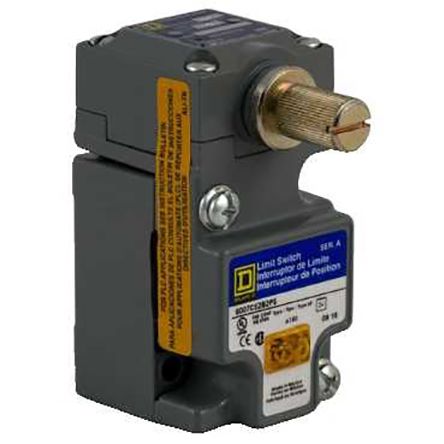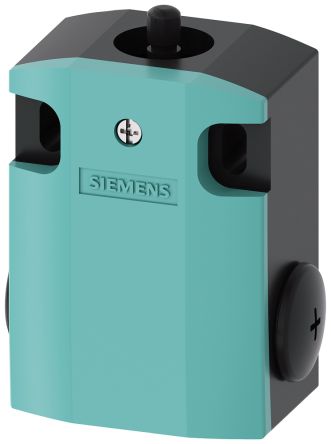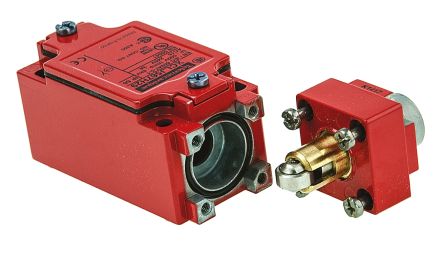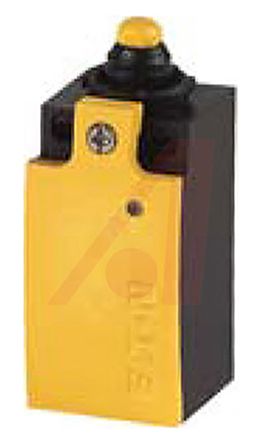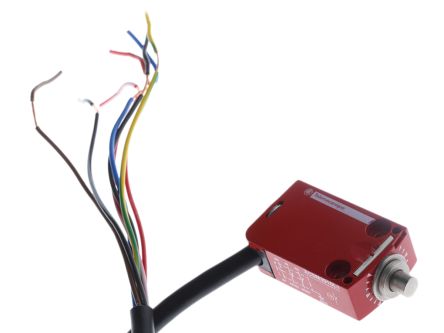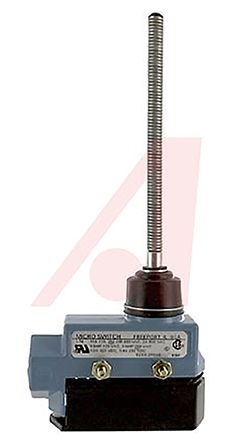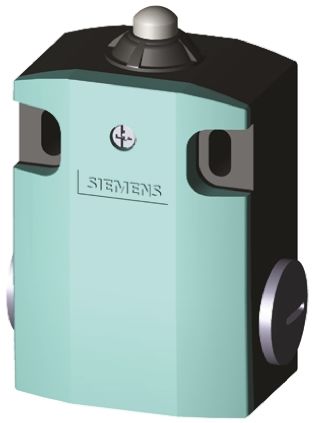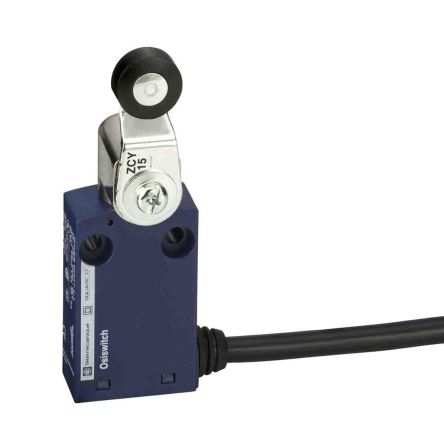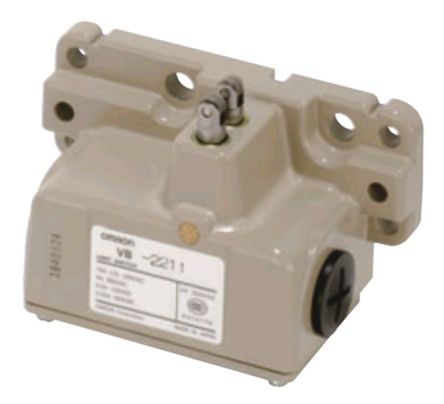- Automation & Control Gear
- Cables & Wires
- Enclosures & Server Racks
- Fuses & Circuit Breakers
- HVAC, Fans & Thermal Management
- Lighting
- Relays & Signal Conditioning
- Switches
- Batteries & Chargers
- Connectors
- Displays & Optoelectronics
- ESD Control, Cleanroom & PCB Prototyping
- Passive Components
- Power Supplies & Transformers
- Raspberry Pi, Arduino, ROCK, STEM Education & Development Tools
- Semiconductors
Limit Switches
Limit switches are essential components in various mechanical and electrical systems, providing precise control and monitoring of machinery. These sensors are critical in automating processes and ensuring safety by confirming the presence or position of objects in industrial environments.
What are Limit Switches?
Limit switches are a contact proximity sensor device that consists of an actuator mechanically linked to a set of output contacts. When an object comes into contact with the actuator, the device operates the contacts to make or break an electrical connection.
Features of Limit Switches
Limit switches are designed for durability and reliability, equipped with features that ensure optimal performance under demanding conditions.
- High Mechanical Durability: Built with sturdy materials to withstand significant force and shock, ensuring long-lasting performance.
- Superior Environmental Resistance: Features a sealed design that remains effective in harsh conditions, protecting against moisture, oil, dust, and extreme temperatures.
Types of Limit Switches
Limit switches are categorised into two primary types, each designed for robust performance and specific applications:
Vertical Types
- High Sealing, Shock Resistant, and Strong: Ideal for environments requiring durable and tightly sealed switches.
- Wide Variety: Available in many variations, these are versatile for a wide range of applications.
- Compact and Low-Cost: Economically designed while maintaining high functionality and compact form, without compromising on environmental resistance.
Horizontal Types
- High Shut-Off Capacity: Designed for applications needing reliable shut-off capabilities.
- High Durability at a Cost-Efficient Price: Offers longevity and reliability at an economical price point.
- Light and Compact with High Durability and Sealing: Combines lightness and compactness with robust durability and excellent sealing against environmental elements.
Structure of Limit Switch
Limit switches are made up of three key components:
1. Actuator
The actuator receives force and movement from the object being detected and transmits it to the built-in switch. It’s critical for initiating the switch's response.
Types of Actuators:
- Roller Lever: Featuring a lever arm that pivots a shaft upon contact with a cam or plate, this part of the limit switch offers both momentary and maintained switching options.
- Plunger: Ideal for applications with short, controlled movements or limited space.
- Flexible Rod (Cat Whisker or Coil Spring): Long, bendable actuators used primarily in conveyor systems to detect passing objects.
- Forked: Features two roller levers to trigger and reset the switch through opposite movements.
2. Cover
Protects the internal components once wired. It typically seals with rubber packing to maintain a secure and protected connection between the cover and the switch case.
3. Built-in Switch
Operates with a snap-action mechanism that can quickly switch ON and OFF. External movements or forces toggle a movable spring, shifting the contact from a normally closed (NC) position to a normally open (NO) position.
4. Switch Case
Encases the built-in switch, enhancing mechanical strength and environmental resistance. Made from metal or resin, it includes a special connector at the conduit opening to secure external cables and ensure a protective seal.
Industrial Applications of Limit Switches
Limit switches are integral to ensuring precision and safety in various industrial environments. Here are some key applications:
- Position Detection on Production Lines: Employed extensively for monitoring the position of assembly robots and workpieces, ensuring operations proceed correctly and efficiently.
- Drive Unit Management: Crucial for controlling and verifying the position of drive units within automated systems, contributing to seamless production processes.
- Equipment and Device Monitoring: Used for detecting open or closed states of doors and covers on machine tools, semiconductor manufacturing equipment, and other industrial machinery, enhancing operational safety and compliance.
- Safety and Security Measures: Integral in enforcing safety protocols by confirming the secure closure of protective covers and access points in high-risk environments.
Ordering and Delivery Information
The quickest and easiest way to order from RS is online, where you can select from our extensive range of mechanical sensors and limit switches. Simply add items to your basket, and opt for next-day delivery or pickup at your local branch. Alternatively, you can place your order by phone at +65 6865 3400.
Next working day delivery is available for all orders placed. Visit our delivery information page for a detailed overview of all our delivery options.
Popular Searches
Related links
- Limit Switch Actuators & Operating Heads
- Torque Screwdrivers
- Siemens 3SE Series Key Switch Limit Switch IP66 1NO/NC 400V ac Max, 10A Max
- Schmersal PS215-T12-K240 Series Limit Switch
- Schmersal PS316-T12-N300 Series Limit Switch
- RAFI RK 90 Series Switch Body for Use with Limit Switches
- Siemens Limit Switch, DPDT
- Crouzet Limit Switch
